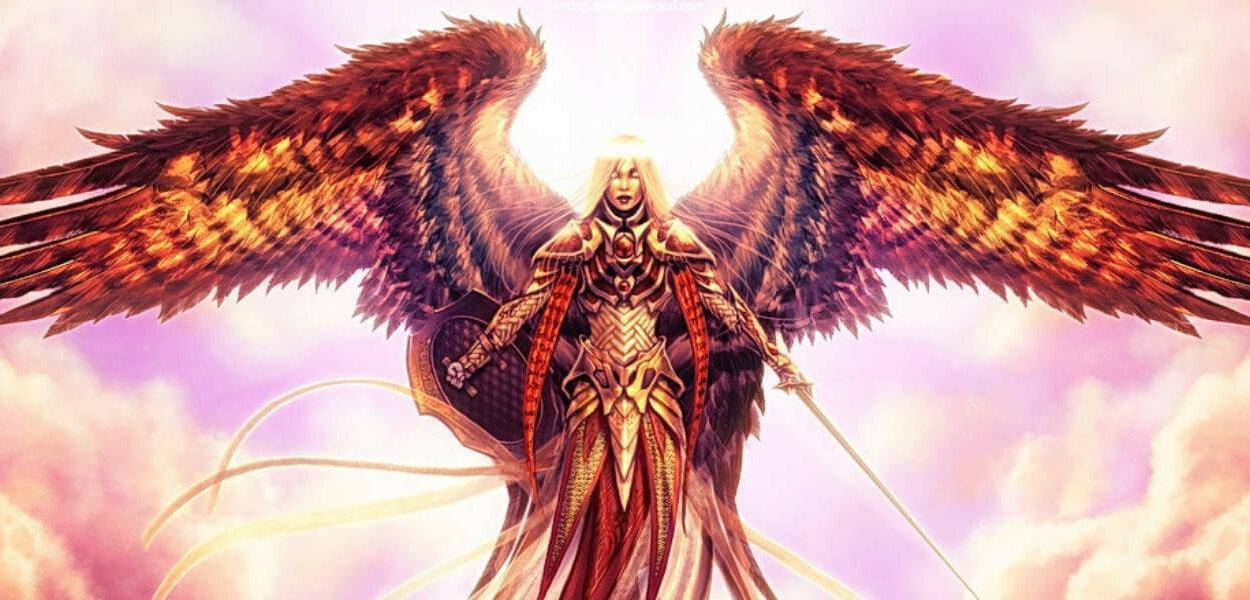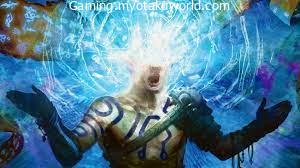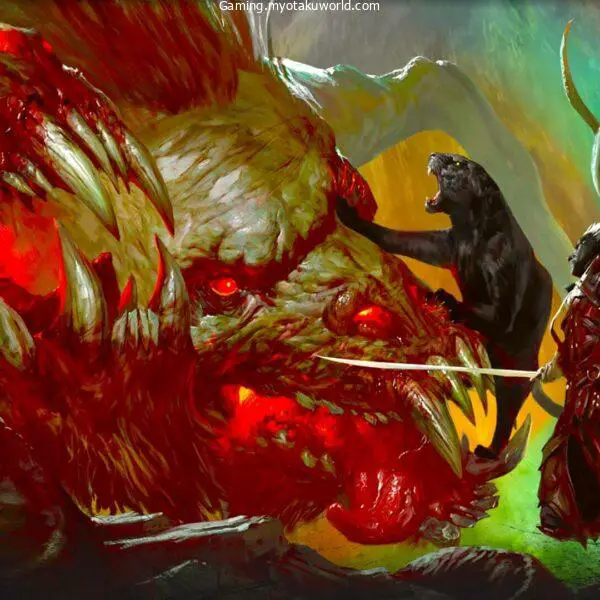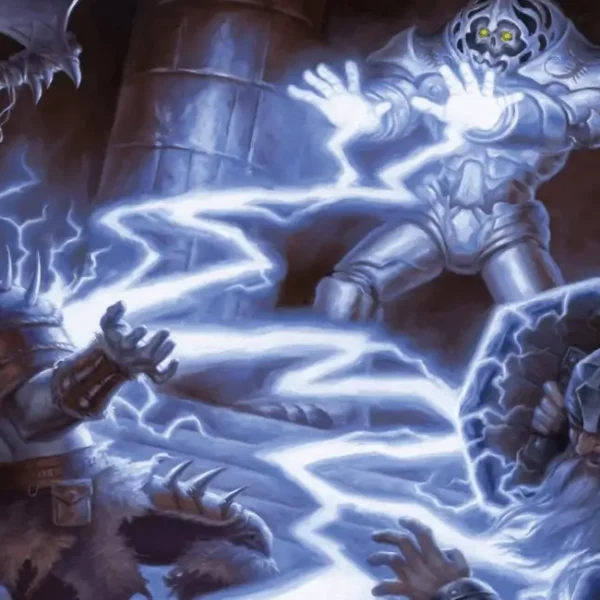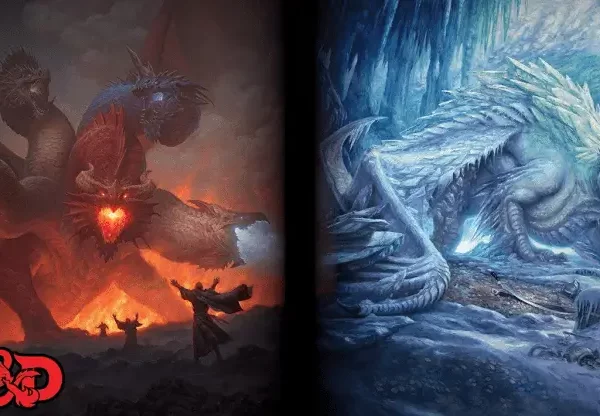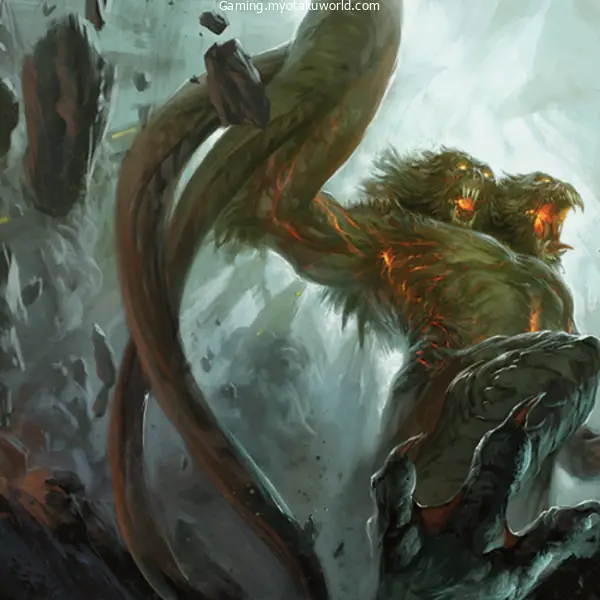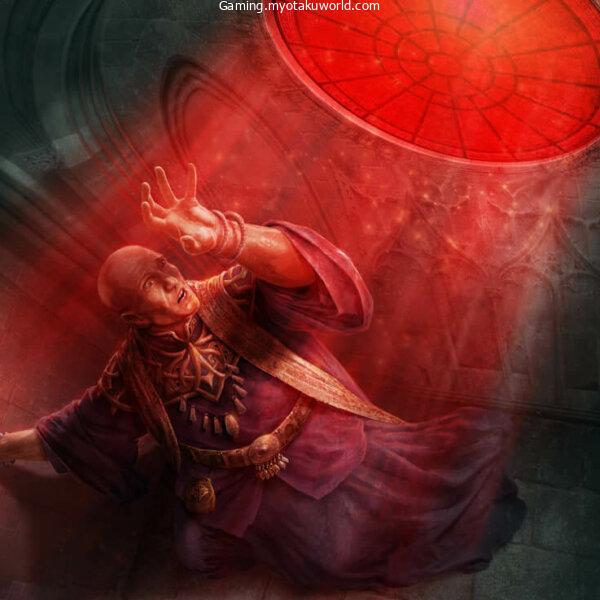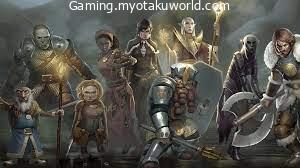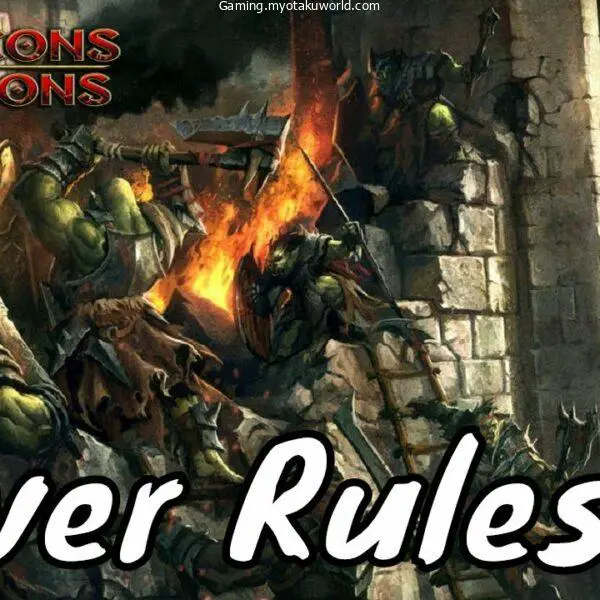I could have found out what I wanted to know about Devas with the help of a celestials 5e guide.
I eventually figured out what I needed to know, but I’ve slowly learned a lot of what I needed to know at the time over the years. I decided to include it in this guide.
Celestials aren’t just angels. They are a type of creature, like humanoids, but they are very different from them.
If you’re anything like me, you’re interested in celestials, whether we’re in the D&D world or the real world.
Celestial 5e – DnD Breakdown
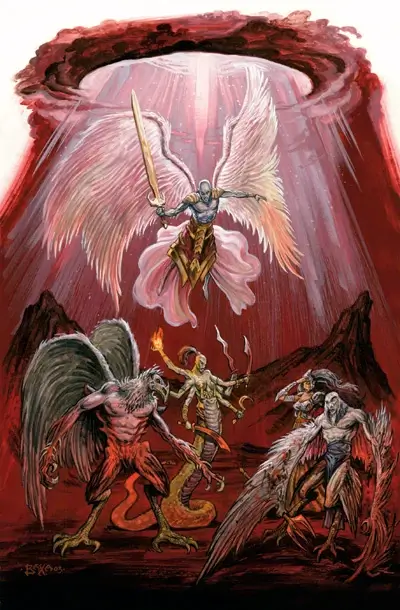
The cosmology of the Forgotten Realms is based around planes of existence. Most D&D adventures take place on the material plane but there are many others.
These planes are divided into several categories – the elemental planes, for example, are the planes of Fire, Earth, Water, and Air.
One major group of planes is the Outer Planes. These seventeen planes correspond to the moral alignments of D&D and include planes ranging from the Seven Heavens of Mount Celestia to the Nine Hells of Baator.
Of the Outer Planes, the good-aligned planes are considered the Upper Planes. These planes are the Seven Heavens of Mount Celestia, the Twin Paradises of Bytopia, the Blessed Fields of Elysium, the Wilderness of the Beastlands, the Olympian Glades of Arborea, the Heroic Domains of Ysgard, and the Peaceable Kingdoms of Arcadia.
These seven planes, and especially Mount Celestia, are where the vast majority of celestials can be found.
- Couatl – Dragon-like celestial
- Deva – Human-like angelic creature
- Empyrean – Large angelic creature
- Hollyphant – Flying elephant
- Ki-rin – Deer-like celestial
- Pegasus – Flying horse
- Planetar – Large angelic
- Solar – Strongest celestial in the lore
- Unicorn – Non-flying celestial horse
These are the main Dungeons and Dragons creatures that live in the sky. The celestials are creatures from another world that came from the Upper Planes. Most of the time, these creatures are happy to help people.
But some celestials don’t think it’s their job to help people on Earth. Most celestials have a Good alignment, which means that when they are found in the wild, they are polite and friendly.
Components of a Celestial 5e
Celestials are different from humans and may not be as simple as you think. What, exactly, makes something a celestial? They don’t have to have wings or the power to heal.
Home Plane
Celestials come from the Upper Planes, where they are born. They only come to our world when they have a message to deliver or a quest to finish. Most of the time, when they finish the quest, they go back to the Upper Plane.
Alignment
All celestials are good by nature. But some people might not do this for one reason or another. They could be influenced, become corrupted, or face a tragedy that changes them. But they were good by nature.
Abilities
Most celestials can fly, don’t take damage from necrotic or celestial damage, and can move freely between planes. Most of the time, they also have a powerful skill that humanoid creatures could only dream of having.
This could mean bringing creatures back from the dead in a way that the Cleric class couldn’t, or destroying a country with a blast of light. The point is that celestials are powerful beings from another world.
Basic Celestials 5e
The basic celestials are creatures from the sky that have been around for a long time in the Dungeons and Dragons world. Or at least since 2014, which is almost as long as 5e has been out.
Couatl
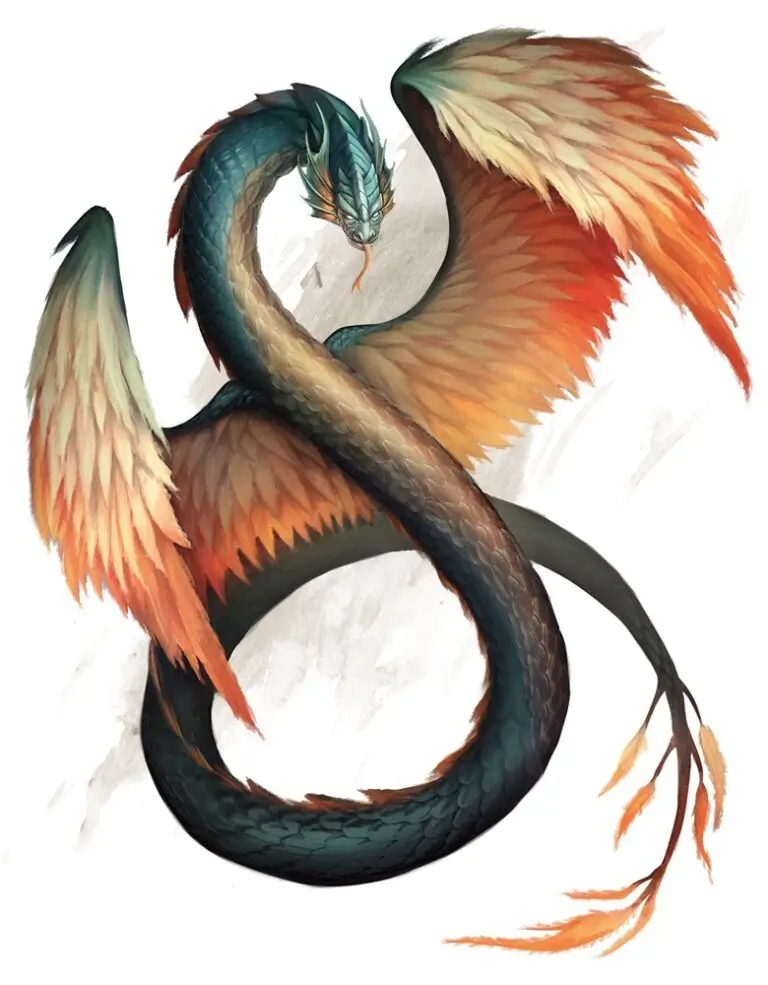
- AC – 19
- HP – 97 (13d8+39)
- Speed – 30ft, 90ft flying
- Alignment – Lawful Good
- Saving Throws – Con +5, Wis +7, Cha +6
- Res/Immune – Resistant to Radiant, Immune to Psychic – and Bludgeoning, Piercing, and Slashing from non-magic
- Langauge – All
In D&D 5e, the Couatl is an enemy that looks like a dragon. The stats are based on the basic information about the monster found in the Basic Rules. Couatl are smart and have pretty good stats in every area.
Couatl are psychic creatures that like to live alone but can travel in groups of up to five. They are also very smart, which is partly because of their psychic abilities. Even though they are compared to dragons, they are good by nature.
The Couatl abilities include:
- Innate Spellcasting – Detect Evil and Good, Detect Magic, Detect Thoughts at will; Bless, Creature Food and Water, Cure Wounds, Lesser Restoration, Protection from Poison, Sanctuary, Shield three times a day; Dream, Greater Restoration, Scrying once a day
- Magic Weapons – Weapon attacks are magical
- Shielding Mind – Immune t scrying and any effect that senses/detect his emotions, thoughts, or location
- Bite – Melee attack +8 to hit, and has a reach of 5 ft.; 8 (1d6+5) piercing damage. Has a DC13 Constitution. If the target fails, he is poisoned for a day and is unconscious until the poison ends or another player wakes it
- Constrict – Melee attack +6 to hit, has a reach of 10 ft., can only target medium or smaller creature; 10 (2d6+3) bludgeoning damage, and the target is grappled with a DC15
- Change Shape – The Couatl shifts into the form of another creature with an equal rating, keeping the same stats aside from AC, movement modes, Strength, Dexterity, and actions
Deva

- AC – 17
- HP – 136 (16d8+64)
- Speed – 30ft, 90ft flying
- Alignment – Lawful Good
- Saving Throws – Wis +9, Cha +9
- Skills – Insight +9, Perception +9
- Res/Immune – Resistant to Radiant and magic, Immune to Psychic – and Bludgeoning, Piercing, and Slashing from non-magic
- Condition Immune – Charmed, Exhaustion, Frightened
- Langauge – All
The Deva is important to me because I love Aasimar, and most Aasimar have a Deva as their connection to the heavens. But you might meet them in the world as a monster or another NPC.
Devas would rather not have to worry about things like clothes, but they are polite enough to wear them when they are on mortal planes. People may think they are tough, but most of the time they are friendly and generous.
Deva’s abilities include:
- Angelic Weapons – weapon attacks are magical and add 4d8 radiant damage to them
- Innate Spellcasting – Detect Evil and Good at will; Commune, Raise Dead once a day
- Multiattack – can make two melee attacks
- Mace – melee attack +8 to hit, reach of 5 ft; 7 (1d6+4) bludgeoning damage and 18 (4d8) radiant damage
- Healing Touch – touch another creature, and they regain 20 (4d8+2) hit points and are freed from any curse, disease, poison, blindness, or deafness (can only use three times a day)
- Change Shape – see Couatl
Empyrean
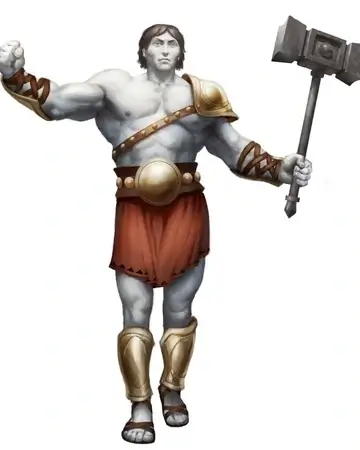
- AC – 22
- HP – 313 (19d12+190)
- Speed – 50ft
- Alignment – Chaotic Good or Neutral Evil
- Saving Throws – Str +17, Int +12, Wis +13, Cha +15
- Skills – Insight +13, Persuasion +15
- Res/Immune – Magic resistance, Immune to Bludgeoning, Piercing, and Slashing from non-magic
- Language – All
The Empyrean is a very large being from space. They were born from gods and have strong feelings. They were so strong that, because of their passive power, their feelings often affected the people around them.
I think what makes the Empyrean so special is that 75% of them are Chaotic Good and a huge 25% are Neutral Evil. This is strange and interesting when it comes to celestials.
Empyrean abilities include:
- Legendary Resistance – Three times a day, an empyrean can choose to succeed on a failed saving throw
- Magic Weapons – See Couatl
- Maul – This melee attack is+17 to hit, has a reach of 10 ft. and can hit one target. It does 31 (6d6 + 10) bludgeoning damage and has a DC 15 on a stun.
- Bolt – This ranged attack is+15 to hit, has a range of 600 ft. and can hit one target. It does 24 (7d6) damage with a choice of acid, cold, fire, force, lightning, radiant, or thunder.
Hollyphant
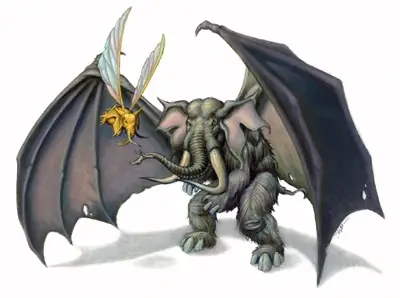
- AC – 18
- HP – 36 (8d6+8)
- Speed – 20ft, 120ft flying
- Alignment – Lawful Good
- Saving Throws – Dex +3, Con +4, Cha +6
- Skills – Insight +13, Persuasion +15
- Res/Immune – Immune to poison. Resistant to Bludgeoning, Piercing, and Slashing from non-magic
- Language – Celestial, telepathy
The Hollyphant is a flying animal that looks like an elephant. It moves slowly on the ground but flies very fast. They love other creatures and are always looking for new ones to hang out with.
Hollyphants are great friends, but I wouldn’t call a celestial a pet. If you’re a “good” creature and you look at the Hollyphant, you’ll be instantly drawn to it. But if you are “evil,” you will fear it right away.
Hollyphant abilities include:
- Aura of Invulnerability – This ability makes a 10-ft invisible sphere around the hollyphant. The sphere makes those inside it immune to spells that are 5th level or lower. This is concentration-based.
- Innate Spellcasting – Light at will; Bless, Cure Wounds, Protection from Evil and Good twice a day; Banishment, Heal, Raise Dead, Shapechange, and Teleport once a day
- Magic Weapons – See Couatl
- Tusks – This melee attack is +3 to hit and has a reach of 5ft. It does 3 (1d6) piercing damage.
- Trumpet – This attack can only be used three times a day. It can be heard from 600ft away and a 30ft cone that either does Trumpet of Blasting or Trumpet of Sparkles.
- Sparkles – Each creature in the 30ft cone must make a DC14 Constitution check. If they fail, they take 17(536) thunder damage and are deafened for 1 minute. On success, take half damage. Non-magic items that aren’t being used take 35(10d6) thunder damage.
- Blasting – Creatures in this cone attack must make a DC14 Constitution saving throw or take 22(4d8+4) radiant damage – if they are neutral. On a success, they take half the damage. Evil creatures have disadvantages, but Good creatures don’t take damage.
Ki-rin
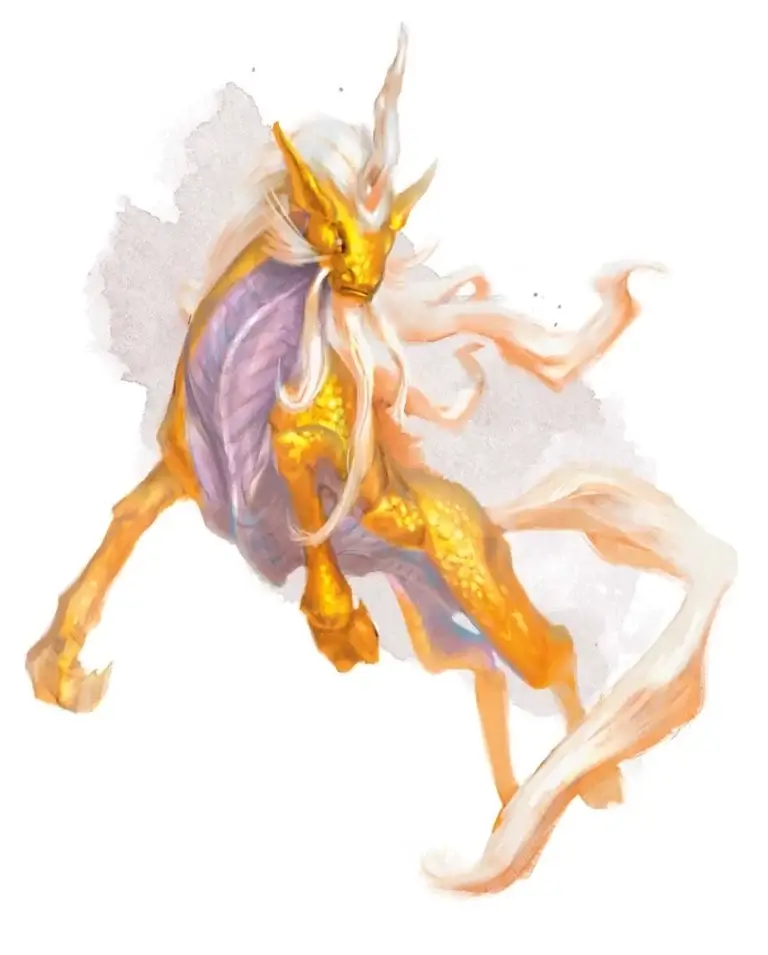
- AC – 16
- HP – 123 (13d10+52)
- Speed – 60ft, 80ft flying
- Alignment – Lawful Good
- Saving Throws – Dex +9, Wis +8
- Skills – Insight +8, Perception +8, Performance +10
- Res/Immune – Resistant to Cold, Fire, Lightning
- Language – Abyssal, Auran, Celestial, Common, Draconic; telepathy
Ki-rin is a big celestial that is very rare in the world of the living. They have bright colours and scales that make them look like deer. Most deer might let you ride them, but the Ki-rin would never let you do that.
Ki-rin would rather stay with their own planes and lives. But sometimes they step in to protect people from evil spirits. Even though they prefer to live alone, some clerics can pair up with them.
Ki-rin abilities include:
- Aerial Freedom – Freedom of movement while flying
- Aura of Cleansing Light – When a creature starts its turn next to the Ki-rin, the Ki-rin can have it take 7(2d6) radiant damage or be healed 7(2d6).
- Innate Spellcasting – Detect Good and Evil, Gaseous Form, Water Walk at will; Lesser Restoration, Scorching Ray three times a day; Dispel Good and Evil, Lightning Bolt once a day
- Multiattack – See Couatl
- Gore – +8 to hit, 10 ft. reach; 21 (3d10+5) piercing damage
- Hoof – Melee attack +8 to hit, 10 ft. reach; 14 (2d8+5) bludgeoning damage
- Radiant Breath – 60ft cone attack of radiant damage. Does 13 (3d8) radiant damage and has a DC16 Dex save. Successes take half the damage.
Pegasus
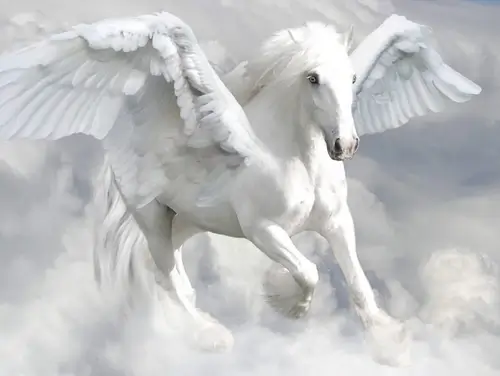
- AC – 12
- HP – 59 (7d10+21)
- Speed – 60ft, 90ft flying
- Alignment – Chaotic Good
- Saving Throws – Dex +4, Wis +4, Cha +3
- Skills – Perception +6
- Language – Comprehends Celestial, Common, Elvish, and Sylvan but can’t speak them
The Pegasus is a lot easier to understand than other gods. You might even be able to “tame” or make friends with one.
The only attack it has is Hooves. The hooves have a +6 chance to hit, a range of 5 feet, and do 2d6+4 stomping damage.
Pegasus don’t have strong personalities that make them stand out from other creatures that look like horses. But they are elegant and beautiful, and they are almost as rare as unicorns.
Planetar
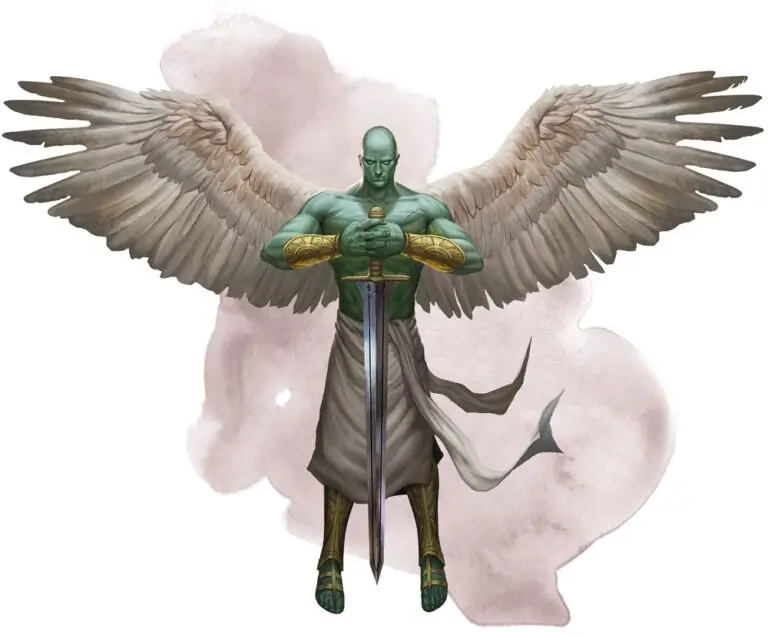
- AC – 19
- HP – 200 (16d10+112)
- Speed – 40ft, 120ft flying
- Alignment – Lawful Good
- Saving Throws – Con +12, Cha +12, Wis +11
- Skills – Perception +11
- Res/Immune – Resistant to Radiant, magic; Resistant Bludgeoning, Piercing and Slashing from Nonmagical Attacks
- Condition – Immune to being Charmed, Exhaustion, Frightened
- Language – All, telepathy
The Planetar are a strong race of angels who look a lot like the Empyrean. They are soldiers who fight for the good and are known for helping regular people when they need help from the gods.
Planetars are always good, not just most of the time. So, Planetar is always willing to help if you need it. They show by what they do: “Do what I do, not just what I say.”
Planetar abilities include:
- Angelic Weapons – Weapon attacks do extra 5d8 radiant damage
- Divine Awareness – Detects lies
- Innate Spellcasting – Detect Good and Evil, Invisibility to self at will; Blade Barrier, Dispel Evil and Good, Flame Strike, Raise Dead three times a day; Commune, Control weather, Insect Plague once a day
- Multiattack -See Deva
- Greatsword – +12 to hit, has a reach of 5 ft; 21 (4d6+7) slashing damage + 22 (5d8) radiant damage
- Healing Touch – Touch to heal target 30 (6d8+3)and is free it from any curse, disease, poison, blindness, or deafness
Solar
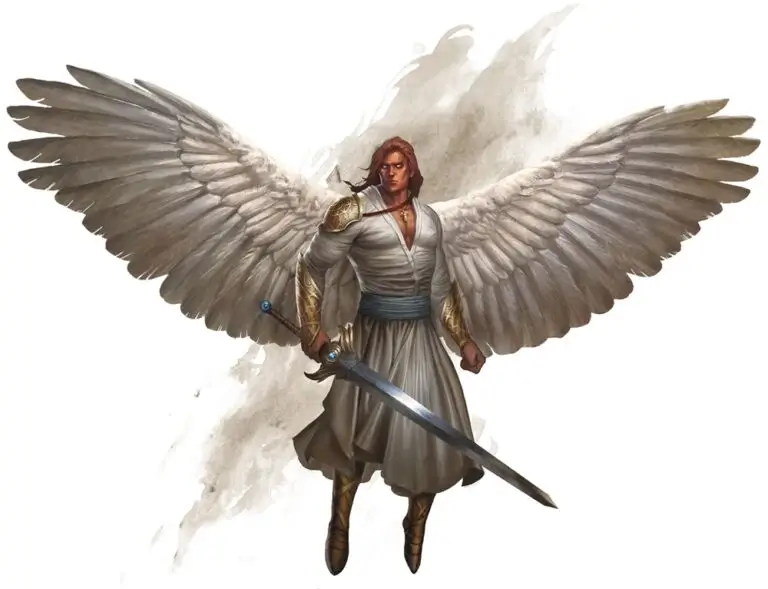
- AC – 21
- HP – 243 (18d10+144)
- Speed – 50ft, 150ft flying
- Alignment – Lawful Good
- Saving Throws – Int +14, Wis +14, Cha +17
- Skills – Perception +14
- Res/Immune – Immune to Necrotic, Poison; Resistant to Radiant, magic; Bludgeoning, Piercing, and Slashing from non-magic
- Condition – Immune to Charmed, Exhaustion, Frightened, Poisoned
- Language – All, telepathy
The Solar are another race of angels. They are often called the most powerful race of angels. They are very strong and loyal, and they put themselves in the service of others. As a weapon, they pray.
Solars are good creatures, but not all of them are as Lawful Good as others. Some of them prefer a more Chaotic Good way of life.
They are one of the purest creatures in the history of Dungeons & Dragons, which is great given how strong they are.
Solar abilities include:
- Angelic Weapons – Weapon attacks do extra 6d8 radiant damage
- Divine Awareness – Can detect lies
- Innate Spellcasting – Detect Evil and Good, Invisibility on self at will; Blade Barrier, Dispel Evil and Good, Resurrection three times a day; Commune, Control Weather once a day
- Multiattack – See Deva
- Greatsword – +15 to hit, has a reach of 5 ft.; 4d6+8 slashing damage plus 6d8 radiant damage
- Slaying Longbow – ranged +13 to hit, has a reach of 150/600 ft; 2d8+6 piercing damage plus 6d8 radiant damage. If the target has 100 hit points or fewer, it must succeed on a DC 15 Constitution saving throw or die
- Flying Sword – Mentally commands sword, moving up to 50ft as a bonus action or attack with it as an action
- Healing Touch – Touch and heal 40(8d8+4) and free the target from any curse, disease, poison, blindness, or deafness.
- Legendary Actions – Teleport, Searing Burst, Blinding Gaze
Unicorn

- AC – 12
- HP – 67 (9d10+18)
- Speed – 50ft
- Alignment – Lawful Good
- Res/Immune – Immune to Poison; Resistant to magic
- Condition – Immune to Charmed, Paralyzed, Poisoned
- Language – Celestial, Elvish, Sylvan, Telepathy
The unicorn is a beautiful animal that can’t fly, making it one of the only things in heaven that can’t. Most of the time, they live in old ruins or wooded areas that are far away from people. They give off auras with magical effects.
The game Dungeons and Dragons is just as rare as a unicorn. Unicorns are usually good, but there are also evil unicorns and water unicorns. All of them are rare and have more beauty and grace than people can even imagine.
Unicorn abilities include:
- Charge – if the unicorn moves at least 20 feet straight and uses Horn on the same turn, it deals an extra 9(2d8) piercing damage. The target must also succeed on a DC 15 Strength saving throw or be knocked prone
- Innate Spellcasting – Detect Evil and good, Druidcrat, Pass Without Trace at will; Calm Emotions, Dispel Good and Evil, Entangle once a day
- Magic Weapons – See Couatl
- Multiattack – See Deva
- Hooves – +7 to hit, reach 5 ft; 11(2d6+4) bludgeoning damage
- Horn – +7 to hit, has a reach of 5 ft; 8(1d8+4) piercing damage
- Healing Touch – touches and heals a creature 11 (2d8+2)
- Teleport – once a day, the unicorn can teleport up to three willing creatures up to a mile away
- Legendary Actions – Hooves, Shimmering Sheild, Heal Self
Celestials 5e from the MtG Crossover Sets
Whenever Magic: The Gathering sourcebooks started coming to D&D, I was more than excited. My favorite type of creature in the Magic world is celestials – so of course, I love these additions.
Winged Bull/Winged Lion
Mythic Odysseys of Theros
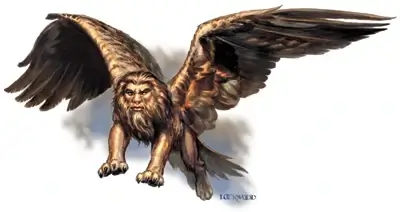
Archons ride on the Winged Bull and Winged Lion, which are said to be physical manifestations of the archon’s will. This lets them act as if they were both thinking the same thing.
Winged Bulls and Winged Lions are usually single-minded creatures in Forgotten Realms. They are given jobs so they don’t bother the other members of the Everlasting.
Battleforce Angel
Guildmasters Guide to Ravnica
Angels are my go-to creature type in the MtG world. Avacyn was my first love in the game, so it’s natural that I’m in love with the angels in Dungeons and Dragons. The Battleforce Angel is a very strong force.
She is “bathed in the sunlight of Boros’s zeal.” Battleforce Angels, unlike many other angels, aren’t afraid to get their hands dirty with blood.
Felidar
Guildmasters Guide to Ravnica

Felidar is the best animal in the sky. He has low horns, beautiful tusks, and a smooth body like a lion. Felidar is a creature that will always get close to other beings and is usually only loyal to one.
Felidar has glowing horns. In the world of MtG, this glow can even make an Eldrazi lose track of time. As long as you don’t turn your back on the Felidar, they will probably stay loyal to you.
Archon of Falling Stars
Mythic Odysseys of Theros
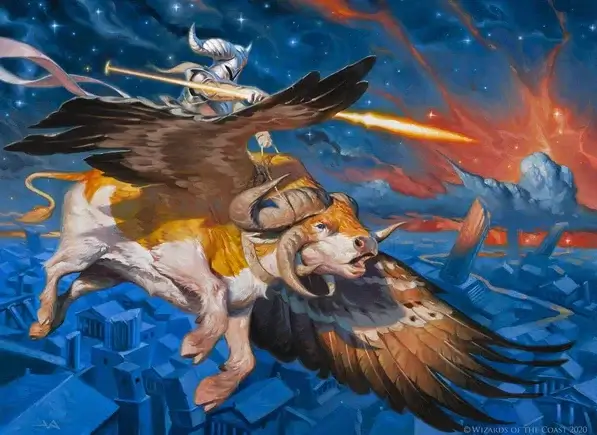
After a great battle, this archon fell but was said to have been saved by Heliod when the archon pledged his life to justice. Now, he holds a spear made by Heliod – that is nearly as strong as the god himself.
Heliod is the sun god that brings light to Theros. So for this strong god to acknowledge the strength and purity in Archon of the Falling Stars says a lot about who this archon is.
Firemane Angel
Guildmasters Guide to Ravnica
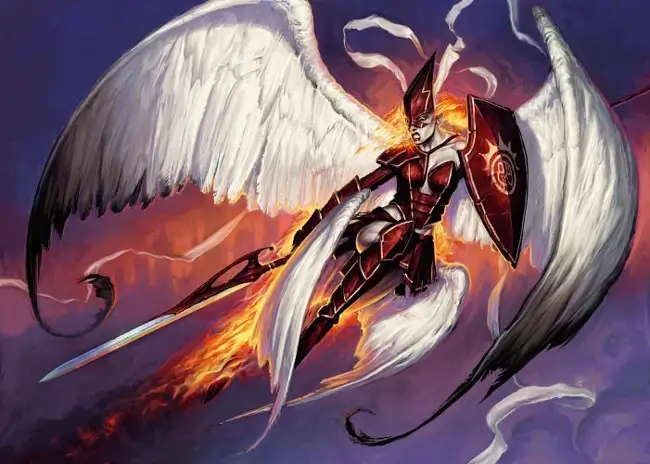
After high-angel Aurelia taught her a lesson, Firemane Angel works on her own and follows the rules. Even though her name is “Fire,” she does not damage with fire. Instead, she shines, as all angels do.
Nevena is the name of the Firemane Angel who is in question. She is a target for many because she has led attacks against the Gateless, who want to get rid of the guild system.
Archon of the Triumvirate
Guildmasters Guide to Ravnica
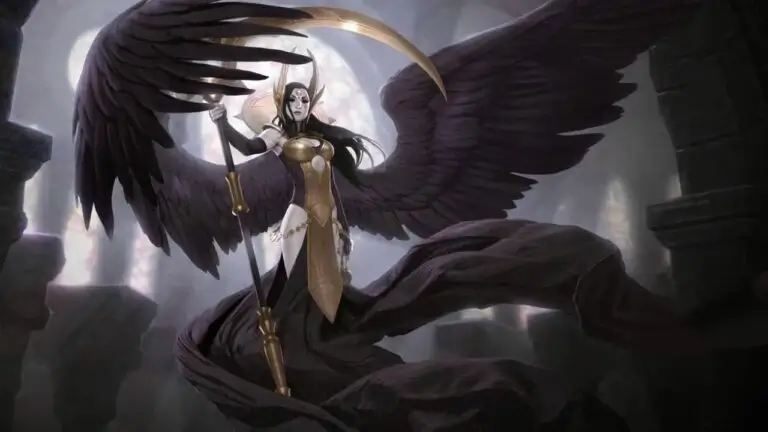
In a way, the Archon of the Triumvirate is like a “god of law and order.” Since it can’t die, it doesn’t need to eat, drink, or sleep. But it does make sure that people who break the law are punished.
This is not a celestial that is Chaos Good. This celestial only cares about one thing. He wants to keep the rules that the gods made, and he isn’t afraid to do something if someone doesn’t follow them.
Deathpact Angel
Guildmasters Guide to Ravnica
The Deathpact Angel is one of Ravnica’s most powerful angels. In exchange for loyalty, she can give her blessing. Any DM who didn’t include this angel in their campaign would be crazy.
The Deathpact Angel is not the most good-hearted angel. For her own glory, she wants people to be loyal to her and collects their debts.
Ashen Rider
Mythic Odysseys of Theros
Another great archon is Ashen Rider. This archon, on the other hand, is bad. After going to the Underworld, they were changed into horrible creatures that make people bow down and give them gifts.
Ashen Rider is the perfect addition to a campaign when you want to throw a left hook at the players who are expecting something better out of a celestial.
Aurelia
Guildmasters Guide to Ravnica
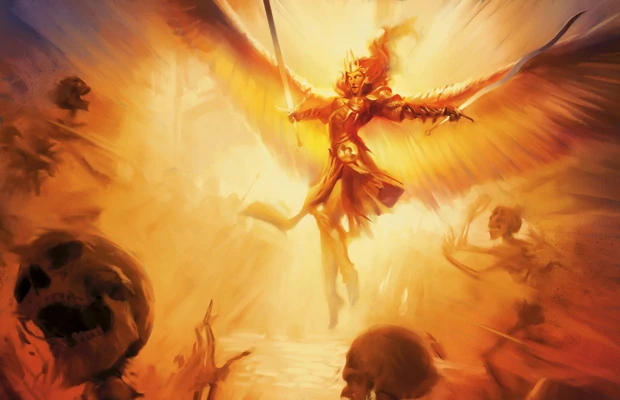
Aurelia is probably someone you know if you’ve played Magic more than a few times. This beautiful angel is one of the strongest in both games.
She is in charge of the Boros Legion, and she has a very special respect for mortals.
Even though Aurelia is kind to humans, she holds her legion to the same high standards she has for herself. When the people she scolds turn against her, this can get her into trouble.
The Celestial Warlock in 5e
- 1st level spells – Cure Wounds, Guiding Bolt
- 2nd level spells – Flaming Sphere, Lesser Restoration
- 3rd level spells – Daylight, Revivify
- 4th level spells – Guardian of Faith, Wall of Fire
- 5th level spells – Flame Strike, Greater Restoration
Warlocks tend to be a rather dark and menacing class in Dungeons & Dragons. But when Xanathar’s Guide to Everything was released, the Celestial Warlock changed everything we knew about the Warlock.
When you choose the Celestial Warlock, you choose a patron from the Upper Planes. The type of celestial you have as a patron is partially up to you or your DM, as it can be a Solar, Ki-Rin, or one of the other options above.
The Warlock that chooses a Celestial path will lean towards good. They want to bring light to the world and dream of one day visiting the Upper Planes to be with your patron for real.
1st Level Celestial Warlock – Healing Light
At 1st level, you learn how to use the cantrips Light and Sacred Flame. They don’t take up the same spots as well-known cantrips. Healing Light is another thing you get. With this, you can use the energy of your patron to heal.
You can use d6s to heal one person at a time who is within 60 feet of you. One plus your Warlock level is how many d6s you can use. When you rest for a long time, these charges come back. You can roll a number of dice at once equal to your Charisma modifier.
6th Level Celestial Warlock – Radiant Soul
The Celestial Warlock’s patron gives them radiant energy when they are 6th level. You become less hurt by damage from light. You add your Charisma modifier to one of the rolls when you cast a spell that deals fire or radiant damage.
10th Level Celestial Warlock – Celestial Resistance
At level 10, you get Celestial Resistance, which lets you gain temporary hit points equal to your level plus your Charisma modifier. After a short or long rest, you get them.
During this time, you can also choose up to five creatures, each of which will get half as many temporary hit points.
14th Level Celestial Warlock – Searing Vengeance
In a D&D campaign, level 14 is a high level. As a Celestial Warlock, when you reach this level, you get the ability to fight death.
At the start of your turn, you have to make a death-saving throw, but you can choose to resist death without rolling.
If you do that, you get back half of your max hit points. Then, you can make each creature within 30 feet of you take radiant damage equal to 2d8 plus your Charisma modifier for each creature you choose.
They also can’t see. This skill can only be used once per long rest.
FAQs
Are Aasimar Celestial in D&D 5e?
No. Even though their ancestors were from the heavens, Aasimar look like people. In the world of Dungeons and Dragons, you can’t be both, which is why Aasimar is called a humanoid.
What is the Strongest Celestial in 5e?
This is not easy to answer. Solar, Empyrean, and Planetar are all godlike celestials whose power may have no limits, depending on what the DM does with them.
Are All Celestials Good?
No. Celestials are usually good, but some of them can be bad. If they are bad, something probably made them that way. After all, bad things aren’t born; they are made.
